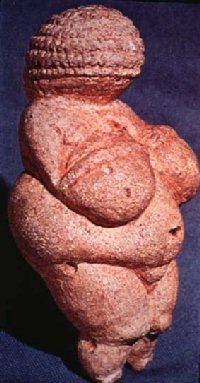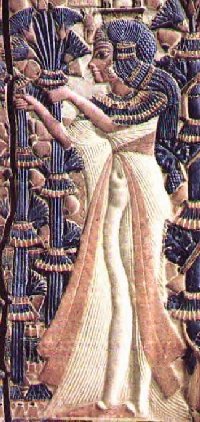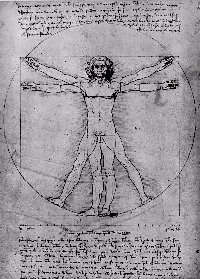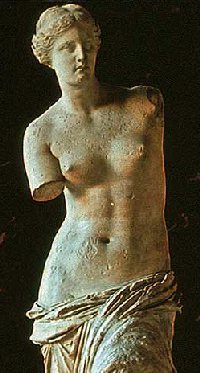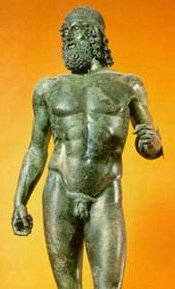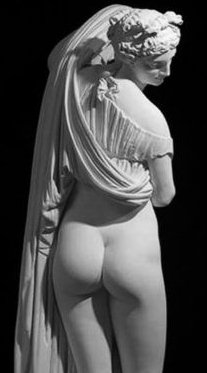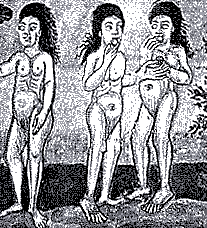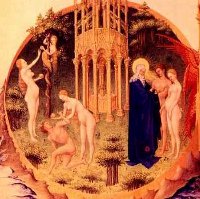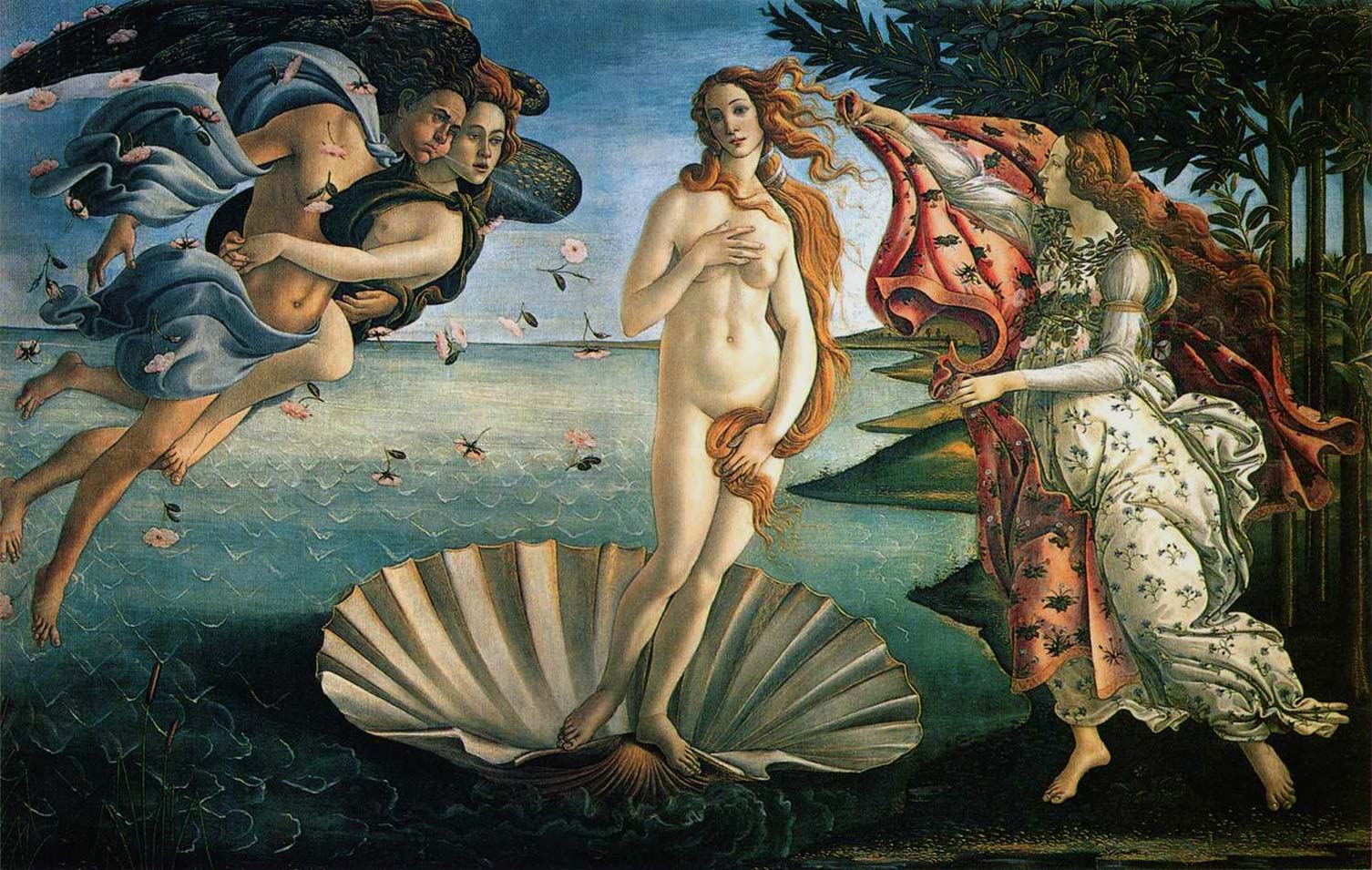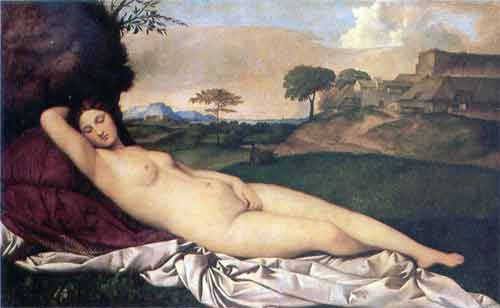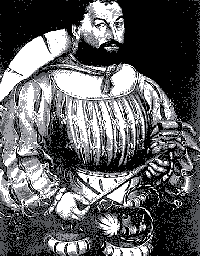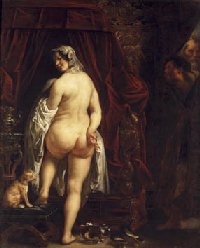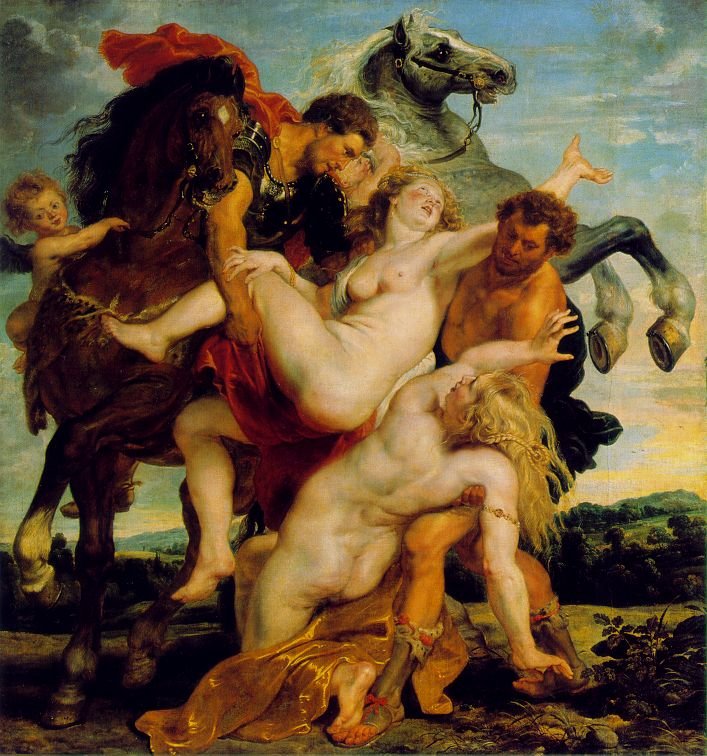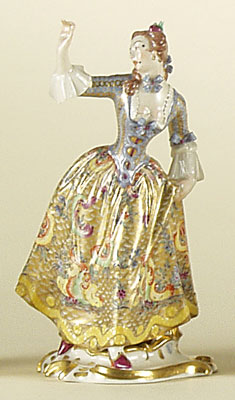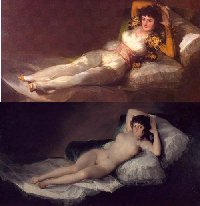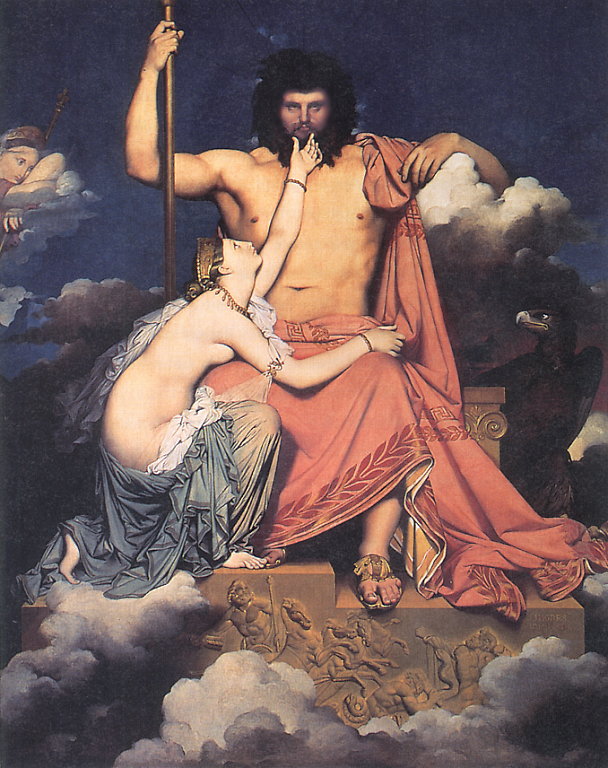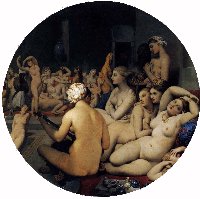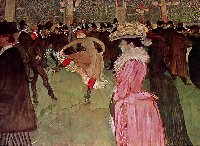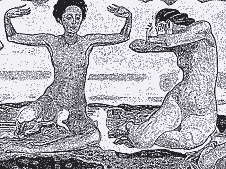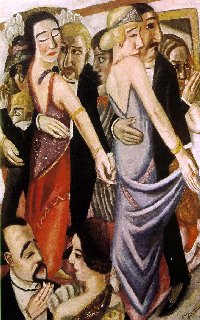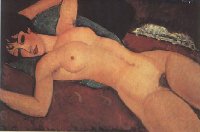| The European Ideal Beauty
The Art History Archive - European Art
The European Ideal Beauty of the Human Body in Art
|
|
|
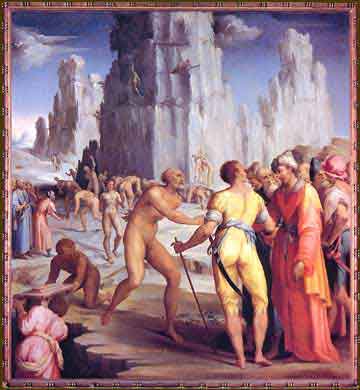
Late Renaissance 11. Diamond Mine Maso da San Friano ~ 1570; Florence, Pal. Vecchio A painting in the style of late Renaissance, also called Mannerism. The painter shows scenes of a diamond mine in the excessive manner of exaggerating, for example human limbs, far away from classical proportions. Even this is Mannerism style, at beginning of 16th century! I must not withhold this extraordinary and singular ideal of a perfect male body from you, that was pursued by all gentlemen of the era, like this one with an arrow by Cranach. 12. Portrait of a Gentleman with arrow Lucas Cranach ~ 1530; Dresden Baroque What a Baroque splendour! Here the "Wife of King Kandaules" by Jacob Jordaens, contemporary of Rubens. Their ladies' stout, luxuriant and voluptuous bodies became proverbial! 13. The Wife of King Kandaules Jacob Jordaens 1646; Stockholm 13 a. The prey of the daughters of Leukipp; P.P. Rubens; Munich
Rococo/Luis-Quinze Another change in the late baroque time: the Rococo, now ladies became graceful and petite, the ideal was a very slim waist line, the "wasp waist". The Colours became refracted now with white or even dark. Here is charming Leda of the Italian "Commedia dell'arte" by Franz Anton Bustelli, who lived in Munich, one of the most ingenious sculptors of 18th century! 14. Leda f. Commedia dell'arte, F.A. Bustelli, porcelain, ca. 20 cm Early Romanticism Again very famous paintings: Maya, the only nude by Goya, and to compare the "Dressed Maya". Now, in another classicistic era, the "Empire", the ideal again approaches Antiquity with a flowing silhouette (you may compare the composition with Giorgiones Venus!). 15. The Mayas Francisco Goya 1798; Madrid, Prado
Classicism What perfect bodies Ingres shows us on his huge painting! Two antique divinities, Jupiter and Thetis, with classical proportions of beautiful athletic bodies. 16. Jupiter and Thetis
Jean Dominique Ingres, ~ 1810
Romanticism - Orientalism Half a century later in a new epoch, we have the same artist with a different sense of beauty: soft curves and magical fairyland was discovered in the art of the middle of 19th century.
17. Turkish Bath, Ingres, 1862
Impressionism Toulouse-Lautrec's painting "Ball at Moulin Rouge" shows one generation later in the epoch of Impressionism the new fashion of slim waist again, but the "fin de siécle" has something unique in addition: the "Cul de Paris", the "Parisian Bottom", the buttocks are emphasised again after almost exactly 2000 years! 18. At the Moulin Rouge, Toulouse-Lautrec, ~ 1890 Philadelphia Coll. McIllhenny Art Nouveau/Jugendstil The new fashion in contrast called "Jugendstil" or "Art Nouveau" liberates the body contours from corset once again, as a hundred years ago. Here we see Hodlers huge painting "The Day II" of 1905. 19. The Day II Ferd. Hodler, 1905 ~ 160 x 360 cm; Zurich Expressionism: The roaring Twenties After the horror of the First World War only practicability is important. In the era of "Bauhaus" and the "Roaring Twenties" the difference between the sexes vanishes for the first time in art history. Curves are no longer an ideal, as here in the "Dancing in Baden-Baden" by Max Beckmann, 1920. 20. Dancing in Baden-Baden Max Beckmann, 1920; Munich Modern Era Finally - another work of the so called "Classical Modern Era", the "Reclining Female Nude" by Modigliani, 1917, a beautiful and ideal body for us. In contemporary art the variety is vast an there seems to be no more universal ideal. Nevertheless the charming curves of Modigliani still delight our senses. 21. Reclining Female Nude Amadeo Modigliani, 1917; Milan
| ||
